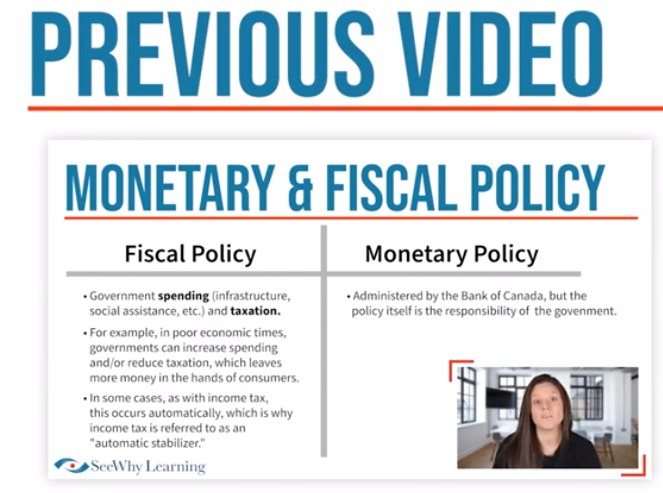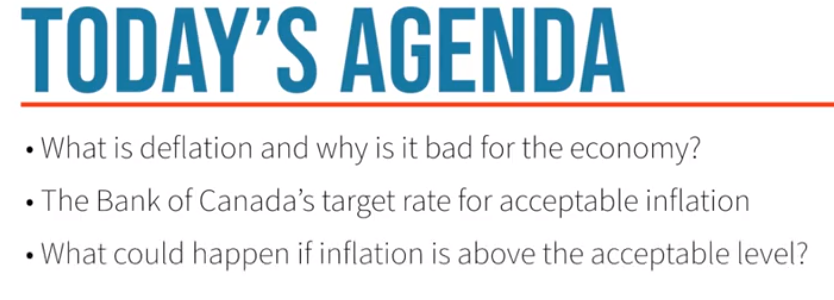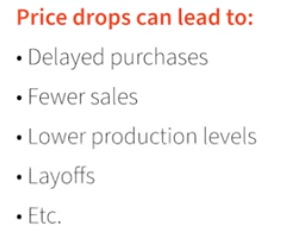Discussing what deflation is and why it’s bad for the economy, the Bank of Canada’s target rate for acceptable inflation, and what could happen if inflation is above the acceptable level.
Hi, everyone. Welcome back to the Coach’s Hangout. In a previous week, we talked about the two main tools that the government of Canada has at its disposal to help nurture, protect, and grow the economy, being monetary and fiscal policy.

In today’s video, we’re going to follow that up by discussing what deflation is and why it’s bad for the economy, the Bank of Canada’s target rate for acceptable inflation, and what could happen if inflation is above the acceptable level.

As you may already know, deflation is the opposite of inflation. It refers to a general decline in prices. Now some of you may be thinking, lower prices sound great. Well, it can be good for the individual consumer in the short term, but it often isn’t great for the economy and can result in lots of lost jobs.

Assume Jimmy was in the market for a brand new car but thought the price of that car was going to drop 3% per year. Every month he delays the purchase, the cheaper the car will be. If everyone thought like Jimmy, it would lead to delayed purchases, fewer car sales today, lower production levels, layoffs. You get the idea. So deflation is not a good thing, right? But I know what you’re probably thinking now. So if deflation is not good, and too much inflation is a bad thing too, what level of inflation is acceptable? The Bank of Canada’s website currently states, “After trying a few different approaches, we agreed in 1991 to aim for an inflation target of 2%. The goal was to reach this target by the end of 1995.” So with this in mind, if the inflation rate was 4% outside of the currently acceptable range, what pressure could that put on interest rates? Higher interest rates can slow down the economy and control inflation.
So if inflation is high, it may put pressure on the Bank of Canada to increase interest rates. Now, higher than desired inflation doesn’t necessarily mean that rates would increase.

Like we discussed in an earlier video, there are a bunch of interconnected variables that would need to be considered, not just the inflation rate. It’s a delicate balancing act to say the least. Then there’s the debate about whether the current rise in prices is temporarily inflated due to the pandemic, referred to as transitory, or is it likely to stick around for a while, referred to as structural. Making an economic forecast requires a lot of skill and expertise, even experts can’t agree, and it’s certainly above my pay grade. As a student, we recommend that you focus on one variable at a time, so you understand the general relationships. Thanks, everybody. If you found this video helpful, please let us know by liking the video, subscribing to the channel, and letting us know what you think in the comment section below.

